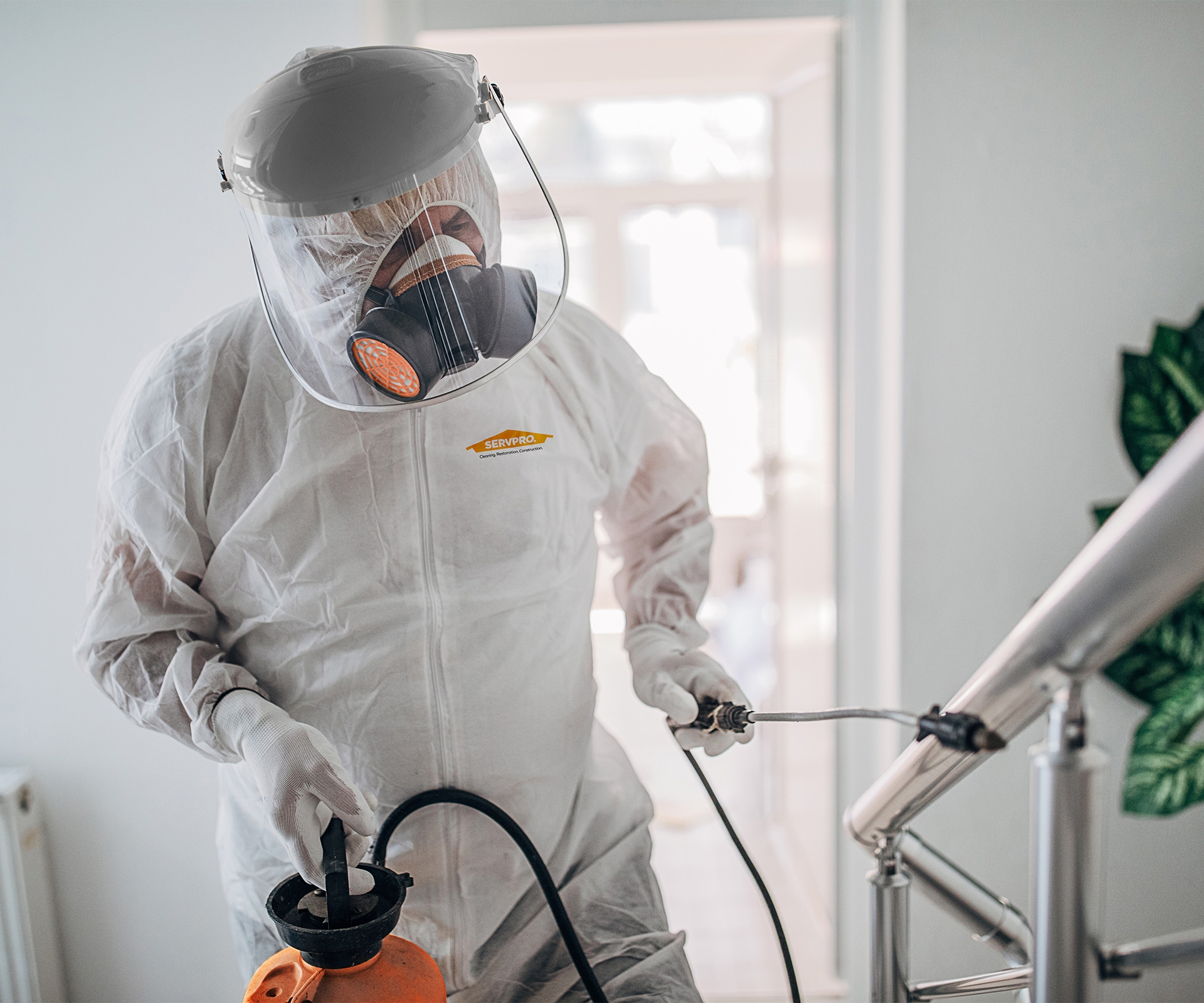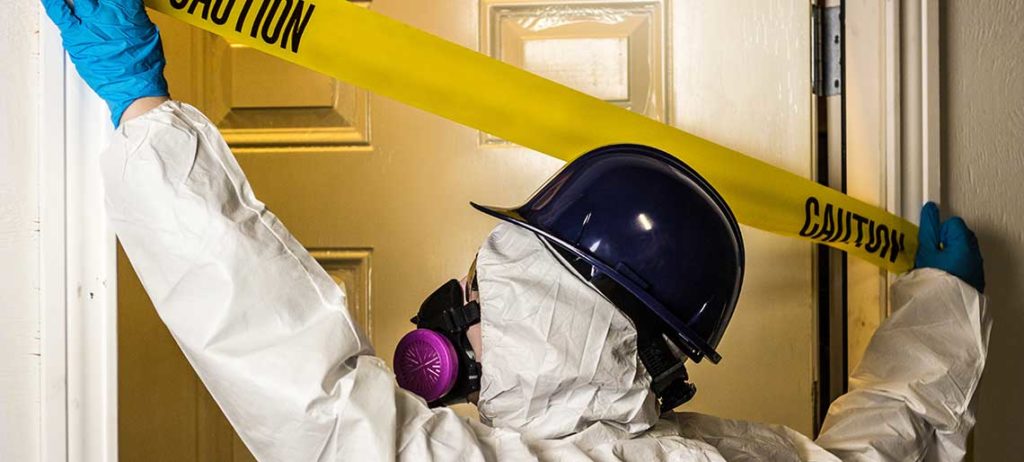Professional Homicide and Suicide Cleanup: Compassionate and Discreet Services
Wiki Article
Specialist Biohazard Cleansing and Decontamination for Blood, Bodily Fluids, and Hazardous Materials
The prospective health threats linked with exposure to biohazards emphasize the essential demand for thorough handling and complete clean-up. As we browse the detailed landscape of biohazard clean-up, understanding the nuances of guidelines, compliance, and the specific equipment at play comes to be vital in ensuring a risk-free and thorough decontamination procedure.
Wellness Risks of Biohazard Direct Exposure
Direct exposure to biohazards positions substantial wellness dangers that can cause severe effects for individuals and neighborhoods alike. Biohazards encompass a wide variety of organic substances, consisting of blood, bodily fluids, mold and mildew, microorganisms, viruses, and other possibly transmittable products. When people come into contact with these biohazards, whether through accidents, incorrect handling, or environmental exposure, they deal with the danger of contracting severe ailments or conditions.Among the main health and wellness dangers connected with biohazard direct exposure is the transmission of contagious illness. Bloodborne microorganisms such as HIV, hepatitis B and C, and various bacteria can be existing in biohazardous products, presenting a straight risk to human health and wellness. Inhaling airborne biohazards like mold and mildew spores or entering into call with polluted surfaces can also lead to respiratory concerns, allergic reactions, and various other unfavorable health effects.
Furthermore, biohazard direct exposure can have lasting health and wellness ramifications, with some illness materializing years after the initial get in touch with (Blood Cleanup). Therefore, it is vital to focus on correct biohazard cleaning and decontamination to minimize these health and wellness risks and ensure the safety and security of communities and people

Specialized Educating for Biohazard Cleanup
When it pertains to handling biohazard clean-up successfully and safely, specialized training plays a basic role in making sure proper decontamination treatments are followed. Biohazard clean-up calls for certain expertise and skills to successfully mitigate dangers connected with bloodborne microorganisms, physical liquids, and hazardous materials. Specialists trained in biohazard clean-up undertake rigorous direction on how to securely deal with, eliminate, and get rid of biohazardous products to avoid contamination and exposure.Specialized training for biohazard clean-up covers an array of important subjects, including correct individual protective devices (PPE) use, bloodborne virus awareness, purification strategies, and contaminated materials disposal procedures. People learnt biohazard cleaning are equipped with the necessary expertise to evaluate contamination levels, determine possible threats, and implement suitable clean-up treatments in conformity with regulatory standards.
Continuous training and education are critical in the field of biohazard clean-up to remain upgraded on the most recent purification technologies, safety protocols, and regulations. By buying specialized training, biohazard cleanup professionals can effectively react to emergency situation cleanup scenarios and secure both public health and the setting.
Value of Correct Decontamination Strategies
Making use of appropriate decontamination techniques is important in biohazard clean-up to efficiently lessen and get rid of dangerous materials health risks. Reliable decontamination not just guarantees the elimination of noticeable traces of blood, physical liquids, and other biohazards but likewise targets undetectable microorganisms that might present serious wellness risks otherwise correctly gotten rid of. By complying with rigorous decontamination methods, trained specialists can considerably lower the risk of direct exposure to dangerous bacteria, infections, and bacteria that can lead to conditions or infections.Appropriate purification strategies involve making use of customized equipment and anti-bacterials that are especially developed to reduce the effects of biohazards properly. Extensive cleansing More hints and sanitation of contaminated areas are important to avoid the spread of virus and ensure a safe atmosphere for passengers. In addition, the correct disposal of biohazardous waste complying with decontamination treatments is essential in avoiding contamination of other surface areas or people.

Tools and Devices for Safe Clean-up
When dealing with blood, bodily liquids, or dangerous products, biohazard cleaning specialists depend on specialized equipment to minimize direct exposure risks and extensively decontaminate the afflicted area. Furthermore, biohazard cleansing kits having disinfectants, absorptive products, and biohazard bags are used to securely contain and dispose of polluted things.Advanced cleaning tools like hospital-grade anti-bacterials, HEPA-filtered vacuum cleaners, and fogging makers are employed to sanitize surface areas and get rid of biohazards efficiently. Specialized tools such as sharps containers and biohazard garbage disposal bins are used to securely manage sharp items and biohazardous waste products. By making use of the appropriate devices and tools, biohazard cleaning professionals can make sure an extensive cleaning procedure that prioritizes safety and decreases wellness dangers for both workers and residents of the damaged room.
Laws and Compliance in Biohazard Cleaning
Proper adherence to regulations and compliance standards is vital in biohazard cleansing to make sure the safety and security of both employees and the setting. Federal government firms such as OSHA (Occupational Safety And Security and Wellness Management) and the EPA (Epa) have established certain standards for biohazard clean-up procedures to reduce health and wellness dangers and environmental contamination. These policies cover a series of aspects including the handling, transport, and disposal of biohazardous products, in addition to the needed training and safety tools needed for workers entailed in the clean-up visit the site procedure.Biohazard cleansing business should remain current with these laws to ensure that their procedures meet the needed safety criteria. Failing to adhere to these laws can cause extreme repercussions, consisting of fines, lawsuit, and threatening the health of people and the environment. By complying with rigorous policies and compliance steps, biohazard cleaning firms can successfully mitigate threats and make sure a thorough and safe cleanup procedure for all events included.
Conclusion
To conclude, biohazard cleaning and purification require customized training, correct methods, and adherence to regulations. Direct exposure to blood, physical fluids, and unsafe materials postures significant wellness risks, making it vital to use the ideal equipment and tools for secure cleanup. By complying with rigorous protocols and guidelines, specialists can effectively alleviate the threats connected with biohazard direct exposure and make certain the safety of both themselves and others.
As we navigate the detailed landscape of biohazard cleanup, comprehending the subtleties of laws, compliance, and the specialized devices at play ends up being vital in making certain a detailed and safe decontamination process. (Blood top article Cleanup)
When it comes to dealing with biohazard clean-up successfully and securely, specialized training plays a fundamental role in guaranteeing appropriate decontamination procedures are complied with.Using appropriate purification strategies is critical in biohazard cleanup to effectively reduce and get rid of dangerous materials health and wellness dangers. Furthermore, biohazard cleaning sets consisting of anti-bacterials, absorptive materials, and biohazard bags are used to safely get rid of and have of infected things.
Federal government companies such as OSHA (Occupational Security and Health Administration) and the EPA (Environmental Defense Firm) have actually established particular guidelines for biohazard cleaning treatments to lessen health threats and ecological contamination.
Report this wiki page